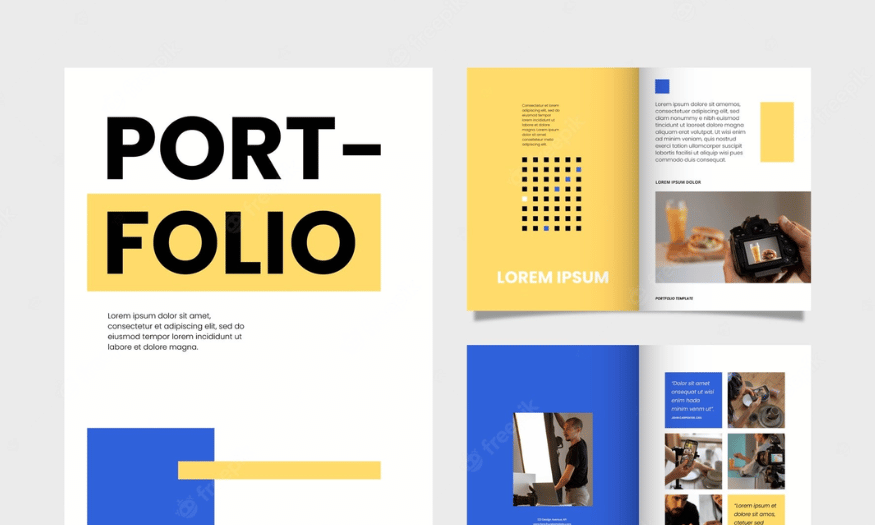Best Selling Products
What is a Catalogue? Learn the main features of a Catalogue in detail
Nội dung
- 1. What is the concept of Catalogue?
- 1.1 Define Catalogue briefly and concisely
- 1.2 Compare Catalogue with other advertising materials
- 2. Purpose and role of Catalogue in marketing activities
- 3. Classification of popular types of Catalogues
- 3.1 Product catalog
- 3.2 Service Catalogue
- 3.3 Corporate Catalogue
- 3.4 Technical catalogue
- 4. Basic characteristics of a professional catalog
- 4.1 Uniform and highly aesthetic design
- 4.2 Concise, clear content
- 4.3 High quality images
- 4.4 Scientific layout arrangement
- 4.5 Easy-to-use format
- 5. Criteria for evaluating an effective catalogue
- 6. Professional catalog design process
- 7. Some notes when using catalogs in marketing strategies
- 8. Conclusion
Find out what a Catalogue is and discover the basic features that make it an effective product promotion tool for modern businesses.

Catalogues have long been an effective tool for conveying information in brand promotion campaigns, product introductions and enhancing corporate identity. Not simply a printed document, catalogues carry within them a harmonious combination of graphic design and marketing strategy. Understanding the basic characteristics of catalogues will help businesses maximize the effectiveness of communication in all promotional activities.
1. What is the concept of Catalogue?
1.1 Define Catalogue briefly and concisely
A catalog is a thin book or leaflet designed to introduce an organization's product, service or brand image. The content inside the catalog is often presented in a systematic form, making it easy for viewers to look up, compare and choose.
Whether in print or electronic form, catalogues still serve as a visual communication tool, expressing brand identity through images, colors and information arrangement. With attractive designs and clear content, catalogues not only provide information but also evoke emotions and stimulate purchasing actions from target customers.
1.2 Compare Catalogue with other advertising materials
Scope of information: Catalogues provide much more complete and detailed information than brochures (which usually focus on a single product/service or a small group), flyers (which are usually short advertisements, focusing on a single message), and leaflets (small leaflets, providing basic information).
Number of products/services: Catalogs can include all or a large part of a business's product/service portfolio, while other documents are usually limited to a few specific products/services.
Purpose of use: Catalogues help customers refer and choose, brochures introduce more details about a specific product/service, flyers and leaflets are often used to attract initial attention or announce promotions.
Durability and longevity: Catalogues are often designed to be used for longer periods of time, as a constant reference, while other promotional materials are often seasonal or used during a specific campaign.
Form and cost: Catalogues are usually thicker and require more investment in design and printing, and the cost of producing a Catalogue is often more expensive due to the number of pages and materials.
2. Purpose and role of Catalogue in marketing activities
Catalogues hold an important place in the marketing ecosystem thanks to their ability to convey messages quickly and effectively. Some typical roles of catalogues include:
(1).jpg)
Introducing products and services : Catalogues play an important role in marketing activities, especially in introducing products and services to customers in a visual and effective way. This is a tool that helps businesses present detailed information about products, including images, descriptions, outstanding features and prices, thereby creating favorable conditions for customers to better understand the value that the product brings. In addition, the catalogue also demonstrates the professionalism and reputation of the business, contributing to building trust and enhancing brand recognition in the market. Using the catalogue strategically will help businesses reach the right customers, promote purchasing decisions and improve business efficiency.
Building brand image : Through a consistent design style and reasonable layout, the catalog helps businesses create a professional, neat image in the eyes of customers. This is not only a tool to introduce products and services but also a means to convey brand messages in a visual and effective way. A professionally designed catalog will help businesses demonstrate their prestige, creativity and unique style, thereby creating a strong impression on customers. In addition to providing detailed product information, the catalog also contributes to enhancing brand value through the use of images, colors and content that are consistent with the overall marketing strategy of the business. Therefore, investing in the design and content of the catalog is not only a marketing solution but also a strategic factor in building and maintaining a long-term brand image.
Increase accessibility and memorability : With strong viral ability, catalogs can be used in exhibitions, fairs, showrooms or sent directly to customers. With intuitive design, information presented clearly and attractively, catalogs help businesses convey messages effectively, while creating a strong impression in the minds of consumers. This is not only a tool to introduce products but also a means to build brand image, create professionalism and enhance trust in the eyes of customers. Using catalogs properly can optimize marketing strategies, thereby boosting sales and strengthening the business's position in the market.
Supporting the sales team : Catalogues act as an illustration tool, helping sales staff present products more effectively and convincingly during the sales process. This is a visual tool that helps present product or service information in a detailed, clear and attractive manner. Catalogues not only provide customers with an overview of the product portfolio but also help the sales team easily explain the features, benefits and value of the product. Through the use of catalogues, businesses can build a professional image, increase customer trust and promote the purchasing decision process.
3. Classification of popular types of Catalogues
Depending on the purpose of use, catalogs are divided into many different types. Below are some popular types of catalogs on the market:
.jpg)
3.1 Product catalog
The most popular type, often used in fields such as fashion, interior design, electronics, cosmetics, etc. The content mainly includes product images, feature descriptions, specifications and prices. This type of catalog is often professionally designed, focusing on presenting detailed product information such as images, descriptions, specifications, prices and related promotions.
Product catalogs not only help customers easily access information but also play an important role in building brand image and increasing business efficiency. Depending on the industry and marketing goals, product catalogs can be designed in traditional print or electronic form to suit the needs of use and modern technology trends.
3.2 Service Catalogue
Often used in the hotel, spa, tourism, and education industries. The design focuses on the benefits of the service, the implementation process, and the customer's feelings after the experience. This type of catalog is often presented in a clear, logical, and professional manner, helping customers easily grasp information and choose the right service.
The content of a service catalog usually includes a detailed description of each service, the benefits that customers receive, a price list (if any), and necessary contact information. This is an important tool in building a brand image and creating a professional impression on customers.
3.3 Corporate Catalogue
Designed to provide an overview of the company such as its history, production capacity, staff, certificates, typical customers, etc. This type of catalog is often used in meetings with partners, investors or in major events.
This type of catalog often includes important information such as history, core values, vision, mission and typical products or services that the business provides. Brand catalogs are not only a promotional tool but also a way to build a professional image, create trust and connection with customers and partners. The design of this type of catalog often focuses on aesthetics, consistency in brand identity and clear, concise content to ensure optimal communication effectiveness.
3.4 Technical catalogue
Specialized for heavy industry, mechanical machinery, electronic engineering, this type of catalog provides detailed technical information, suitable for those who need to study in depth about features and uses.
This type of catalog usually includes technical specifications, user manuals, illustrations and practical applications of the product. Technical catalogs not only help customers better understand the product but also help engineers, designers or industry experts easily select and integrate products into specific projects. With a scientific and detailed presentation, technical catalogs play an important role in conveying accurate information and promoting efficiency in the research, implementation and operation process.
4. Basic characteristics of a professional catalog
For the catalogue to be most effective in communication, it is necessary to ensure the following basic characteristics:
4.1 Uniform and highly aesthetic design
Design is the first element that creates an impression on viewers. A professional catalog must ensure that the colors, fonts, images and layout are consistent with the brand identity. High aesthetics will help create sympathy and increase memorability.
.jpg)
A professional catalog needs to be designed in a uniform manner, ensuring consistency in color, layout and presentation style, in order to create a strong impression and clear brand recognition. In addition, high aesthetics also play an important role, helping to attract customers' attention and convey messages effectively. The harmonious combination of content, images and fonts will highlight the value of the product or service, while demonstrating the professionalism and prestige of the business.
4.2 Concise, clear content
Customers do not have much time to read a long catalogue. Therefore, the content needs to be edited concisely, focusing on the most prominent points, presented in a logical sequence for readers to grasp easily. Focusing on transparency and logic in the content structure not only creates a good impression but also enhances the effectiveness of message transmission, while demonstrating the professionalism and prestige of the brand.
4.3 High quality images
Images in a catalog play an important role in conveying information and emotions. Investing in professional, high-resolution images will increase the value of the catalog in the eyes of consumers.
Images not only need to be sharp and have the right color, but also need to be arranged properly, consistent with the content and overall design style of the catalog. Using high-quality images not only enhances the aesthetic value but also demonstrates professionalism, creates trust and promotes positive interaction from customers.
4.4 Scientific layout arrangement
An effective catalogue needs to have a reasonable layout, using a grid system, dividing the layout into clear groups of products or services. This helps readers easily find the necessary information without feeling overwhelmed.
4.5 Easy-to-use format
Catalogues can be in print or electronic format (PDF, Flipbook, etc.). Regardless of the format, optimizing the user experience is a prerequisite. The publication needs to be easy to flip through, easy to search, and have a clear index if the number of pages is large. Content items should be arranged logically, making it easy for viewers to find and access the necessary information. The use of colors, fonts, and images should be carefully considered to both create highlights and maintain overall harmony. In addition, the catalogue needs to demonstrate professionalism by paying attention to every small detail, from the way the categories are divided, the presentation of products to the use of precise and easy-to-understand language, in order to create a good impression and enhance brand value.
5. Criteria for evaluating an effective catalogue
An effective catalog must meet important evaluation criteria such as clarity and ease of information presentation, attractive and professional image design, as well as logical and coherent content arrangement. In addition, the catalog must accurately reflect the brand value, while providing full product or service information to help customers make decisions easily. Choosing high-quality printing materials and using harmonious colors also play an important role in creating a good impression on viewers. Finally, an effective catalog must be able to promote action from customers, such as contacting, making a purchase or learning more about the business.
6. Professional catalog design process
A catalogue is created through a clear process, with coordination between many departments:
Collect content : List products/services, detailed descriptions, relevant images.
Layout : Determine design style, choose grid type, determine position for each content section.
Graphic design : Use specialized software such as Adobe InDesign, Illustrator to create layout.
Editing and proofreading : Proofreading, checking technical information, images and design consistency.
Print or publish online : Choose printing materials, paper weight or convert to digital format.
7. Some notes when using catalogs in marketing strategies
Always keep up to date : Catalogues need to be updated periodically to accurately reflect current product status, prices and policies.
Optimize for multiple platforms : If using an e-catalog, make sure it is compatible with multiple devices such as phones, tablets and desktops.
Combined with other communication channels : Catalogues will be more effective when combined with multi-channel communication campaigns such as email marketing, Facebook advertising, offline exhibitions, etc.
Statistics and analysis of effectiveness : Don't forget to measure customer interest in the catalog through downloads, calls, and orders generated from this channel.
8. Conclusion
Catalogues are not only a simple product introduction tool but also a means of building brand image and connecting with customers in a sophisticated and professional way. In the context of increasingly fierce competition, serious investment in catalogue design and content will contribute to creating a distinct advantage, helping businesses affirm their position in the market. A quality catalogue is the brand identity encapsulated in each page - impressive, creative and full of emotion.












































